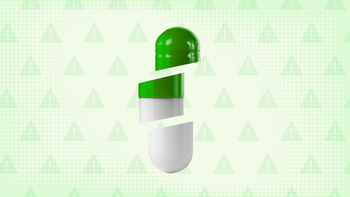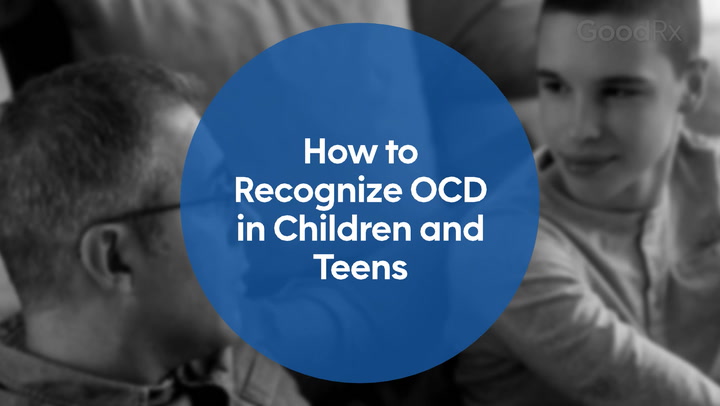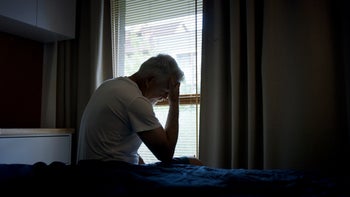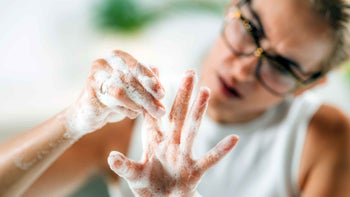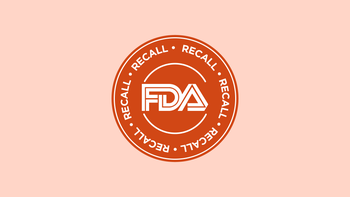
What Are the 4 Main Types of Obsessive-Compulsive Disorder (OCD)?
Key takeaways:
While all types of obsessive-compulsive disorder (OCD) include a pattern of obsessions and compulsions, the obsessions or intrusive thoughts themselves can take on different themes.
OCD manifests in four main ways: contamination/washing, doubt/checking, ordering/arranging, and unacceptable/taboo thoughts.
People with OCD can find relief with the help of therapies like exposure and response prevention and medications.

In popular culture, people with obsessive-compulsive disorder (OCD) are often depicted as “germaphobes.” Maybe they can’t stand an untidy room. Or they keep disinfectant on them at all times.
It’s true that many people with OCD have fears about cleanliness and contamination. But that’s not the only way OCD can present. The obsessions that affect people with OCD — and the compulsions that come with them — fit into four main types.
What does OCD look like?
OCD is a mental health condition that can present differently in different people. Its defining characteristics are repeated obsessive thoughts and compulsive actions:
Obsessions: These are unwanted and intrusive thoughts, urges, or images that happen again and again. They cause a great deal of anxiety.
Compulsions: These are repetitive behaviors that someone feels an urge to do. An obsessive thought can trigger a compulsion. Compulsions can include visible behaviors like handwashing, tapping, and checking. But they can also be mental behaviors, like repeating words and counting.
Obsessions and compulsions often occur as a pattern, where someone has an obsessive thought and then is compelled to a certain action in response. But they don’t always occur together.
4 main types of OCD
Obsessions and compulsions can cover a range of topics. But most of them fit into four categories. You can have obsessive thoughts and compulsions that fall into more than one category. And you can have obsessions and compulsions that may be different from the four types of OCD listed below.
1. Contamination and washing
People with this type of OCD have obsessive thoughts about getting sick and spreading germs. Their compulsions are related to cleanliness — but way beyond the typical ways people practice hygiene and cleaning.
For example, someone with contamination OCD may:
Develop rituals that involve washing their hands so many times that their hands regularly bleed
Overuse bleach and other cleaning materials to ensure their environment is safe from contaminants
Avoid touching everyday objects like door knobs or using public bathrooms
Research suggests that those who develop this type of OCD may have oversensitive disgust reactions. This means they feel disgust more frequently than most people. They then have a more difficult time letting the feeling go.
Besides dirt and germs, people living with contamination OCD may also develop fears about:
Blood
Spoiled food
Bodily fluids
Broken glass
2. Doubt and double-checking
People with OCD often lack confidence in their own memory and judgment. Doubt is a central element of every type of OCD. Yet some people particularly struggle with doubting their own perception of reality. They may also doubt their memory of events that just happened.
A person with this type of OCD can leave the house, lock their door, and as soon as they get into their car, question whether they locked their door. Wondering if you left your door unlocked from time to time may be an uncomfortable feeling for some. But for someone with OCD, they may have to check back multiple times before trusting that the task has been completed.
Incompleteness — or the feeling of something not being “just right” — is another trademark element of OCD. For example, someone with OCD might lock their door over and over again. Even if the door was locked properly the first time, this feeling of incompleteness can drive them to repeat the task until it feels “just right.” This repetitive checking can take up a lot of time and affect quality of life.
3. Ordering and arranging
People with this type of OCD may get fixated on order and symmetry in their environment. This isn’t the same as wanting to keep your house organized. People with this type of OCD can lose hours of their day arranging the same objects over and over again until they meet a certain standard.
Examples of compulsions that fall into this category include:
Rearranging items in your home until they feel “correct”
Moving items a certain number of times (for example, putting the same book on a shelf eight times because that number holds special significance)
Counting items repeatedly
4. Taboo or intrusive thoughts
People with this type of OCD have intrusive thoughts that stray far from their values — whether sexual, violent, or taboo in nature. Everyone may experience an occasional taboo or “unacceptable” thought. But people with OCD may have a harder time letting these thoughts pass.
Types of “taboo” or intrusive thoughts often fall into a few major themes, such as:
Sexual orientation OCD: These intrusive thoughts or obsessions revolve around the person’s sexual orientation. They may constantly question their sexual attraction to other people. And they may repeatedly look for ways to confirm their sexual orientation by asking others for reassurance about their thoughts.
Relationship OCD: It’s typical to experience occasional doubts in a relationship. But relationship OCD goes beyond these typical concerns. It may lead a person to constantly question if they’re in a relationship with the “right” person. Or they may fixate on their partner’s “flaws” and character traits.
Harm OCD: Someone with harm OCD worries about their capacity or will to harm others. This fear can extend to hurting themselves, people they love, or even hurting a stranger. It may be accompanied by unwanted violent images or thoughts.
Pedophilia OCD: These intrusive thoughts or obsessions are related to fears of being attracted to children or sexually harming a child. The person may experience distressing doubts that they may be a pedophile, even though there’s no evidence to support this fear.
Scrupulosity OCD: A person whose OCD fits into this theme may constantly monitor themselves for “immoral” or “sinful” behavior, thoughts, or feelings. The intrusive thoughts or obsessions they experience are related to moral, ethical, or religious issues.
Intrusive thoughts are especially distressing because they don’t align with the person’s values. Someone with OCD generally will not carry out the acts they fear. Instead, they may go to great lengths to not have these thoughts.
Unfortunately, trying not to think about something usually has the opposite effect. By avoiding an intrusive thought, it’s only more likely to return.
People with taboo obsessions may have less obvious compulsions. These compulsions may not be visible to other people, but they can still cause the person a lot of distress. They often perform other types of compulsions to reduce their anxiety:
Suppress thoughts (or deliberately try to not have a thought)
Look for reassurance from others
Pray compulsively
What is the most common type of OCD?
The most common type of OCD is contamination and germ OCD. Up to 46% of people who’ve been diagnosed with OCD experience this type of OCD.
How does OCD develop?
The exact causes of OCD are unknown. But experts believe that biological and environmental factors play a role. Risk factors that are linked to OCD include:
Genetics: Having a close family member with OCD increases the risk that a person will also develop it. Scientists are still trying to understand the link between genetics and OCD and have yet to find an “OCD gene.”
Biology: People with OCD show structural differences in parts of the brain involved in controlling emotions and behavior, which scientists believe explain why some people develop OCD.
Early childhood experiences: Studies have found a connection between early childhood trauma and developing OCD.
Certain developmental periods also pose unique risks for developing OCD. “Pediatric autoimmune neuropsychiatric disorders associated with streptococcal infections” (PANDAS) is a form of OCD that can develop in children after a strep infection. This condition involves the sudden development or worsening of OCD symptoms or tics after strep throat. It’s most common in prepubescent children.
Women who have recently given birth are also at increased risk of developing OCD. This type of OCD is called perinatal or postpartum OCD. In the case of perinatal OCD, the obsessions and compulsions are typically related to the baby’s health or well-being.
How is OCD treated?
OCD can be treated with therapy, medication, or a combination of both. Exposure and response prevention (ERP) therapy is considered the first-choice treatment for people with OCD.
ERP gradually exposes the person to situations or thoughts that trigger their obsessions. With the support of a therapist, they can then practice tolerating their anxiety without engaging in their compulsions. Over time, their fear and anxiety will lessen, and they’ll have new tools to cope with intrusive thoughts and anxiety.
Up to 6 in 10 people who complete ERP treatment have less OCD symptoms over the long term. Cognitive behavioral therapy (CBT) and acceptance and commitment therapy (ACT) have also been shown to help people living with OCD.
Medications for OCD may also be helpful. Certain antidepressants — such as selective serotonin reuptake inhibitors (SSRIs) — have been found to help reduce symptoms in people with OCD. These medications may take 10 to 12 weeks to work effectively. Experts recommend that people taking medications for OCD also participate in therapy.
To get help for OCD, you can start by searching online for therapists trained in treating OCD. Use the International OCD Foundation’s “find help” tool to find an OCD therapist near you. You can also ask your primary care provider for a referral to a qualified mental health professional.
Because OCD requires specialized treatment, it’s important to work with a healthcare professional who has experience and training in this area. Be sure to ask any healthcare professional you work with if they have a background in OCD treatment and how they approach treating the condition.
Frequently asked questions
OCD can develop as early as preschool and all the way into adulthood. The most common age groups to begin experiencing OCD symptoms are between 8 and 12 years old, and between late adolescence and early adulthood. About 1% of adults and 0.5% of children have OCD.
OCD symptoms unfold in a series of four stages. Sometimes this is called the “OCD cycle.” The four stages are:
Obsession
Anxiety
Compulsion
Temporary relief from anxiety
In the first stage, the obsessive thought, impulse, or image triggers anxiety. The person then engages in a compulsive act, which temporarily lessens the anxiety. But the anxiety returns and the cycle begins again.
There are many subtypes of OCD. Some experts have organized OCD into five different subtypes, which include:
Symmetry and order: Obsessions about maintaining symmetry and compulsions around counting and putting things in order
Contamination: Obsessions about contamination and compulsions around cleaning and disinfecting
Harm: Obsessions around causing or preventing harm and compulsions that involve repeatedly checking and seeking reassurance
Intrusive thoughts and rumination: Disturbing obsessions involving topics like sex, religion, or violence
Hoarding: Obsessions and compulsions related to collecting items
The bottom line
Obsessive-compulsive disorder (OCD) — aptly known as the “doubting disorder” — can greatly affect a person’s quality of life.
OCD can manifest in four main ways: contamination/washing, doubt/checking, ordering/arranging, and unacceptable/taboo thoughts. Obsessions and compulsions that revolve aroun contamination and germs are the most common type of OCD. But OCD can present in many different ways.
No matter the type of OCD, treatments like ERP therapy and medications can help reduce symptoms and improve quality of life.
Why trust our experts?



References
Cougle, J. R., et al. (2007). Perception of memory ability and confidence in recollections in obsessive-compulsive checking. Journal of Anxiety Disorders.
Doron, G., et al. (2014). Relationship OCD. International OCD Foundation.
Heyman, I., et al. (2006). Obsessive-compulsive disorder. British Medical Journal.
International OCD Foundation. (n.d.). About OCD?
International OCD Foundation. (n.d.). Who gets OCD?
International OCD Foundation. (2023). What are postpartum and perinatal OCD?
Jalal, B., et al. (2020). Obsessive – compulsive disorder — contamination fears, features, and treatment: Novel smartphone therapies in light of global mental health and pandemics (COVID-19). CNS Spectrums.
Jenike, M. (n.d.). Medications for OCD. International OCD Foundation.
Law, C., et al. (2019). Exposure and response prevention in the treatment of obsessive-compulsive disorder: Current perspectives. Psychology Research and Behavior Management.
Levy, J. (2016). Am I a monster? An overview of common features, typical course, shame and treatment of pedophilia OCD (pOCD). International OCD Foundation.
National Institute on Mental Health. (2019). PANDAS—questions and answers.
National Institute on Mental Health. (2022). Obsessive-compulsive disorder.
Penzel, F. (2000). OCD and contamination. International OCD Foundation.
Penzel, F. (2007). How do I know I’m not really gay/straight? International OCD Foundation.
Ramezani, Z., et al. (2016). Predicting obsessive compulsive disorder subtypes using cognitive factors. Iranian Journal of Psychiatry.
Reid, J., et al. (2009). “Just right” OCD symptoms. International OCD Foundation.
Williams, M. T., et al. (2013). Symptom dimensions in obsessive-compulsive disorder: Phenomenology and treatment outcomes with exposure and ritual prevention. Psychopathology.
For additional resources or to connect with mental health services in your area, call SAMHSA’s National Helpline at 1-800-662-4357. For immediate assistance, call the National Suicide Prevention Lifeline at 988, or text HOME to 741-741 to reach the Crisis Text Line.






